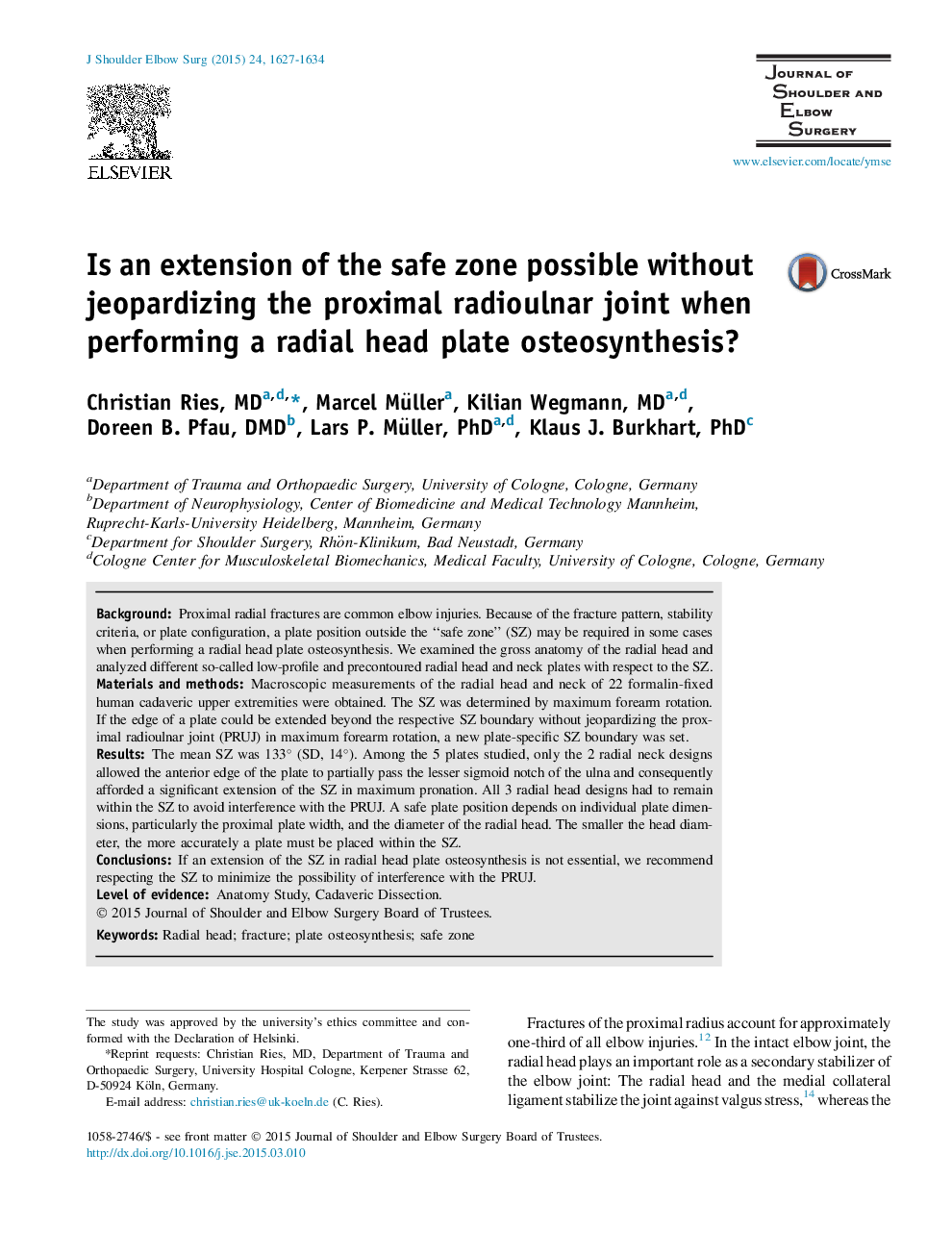| Article ID | Journal | Published Year | Pages | File Type |
|---|---|---|---|---|
| 6211018 | Journal of Shoulder and Elbow Surgery | 2015 | 8 Pages |
BackgroundProximal radial fractures are common elbow injuries. Because of the fracture pattern, stability criteria, or plate configuration, a plate position outside the “safe zone” (SZ) may be required in some cases when performing a radial head plate osteosynthesis. We examined the gross anatomy of the radial head and analyzed different so-called low-profile and precontoured radial head and neck plates with respect to the SZ.Materials and methodsMacroscopic measurements of the radial head and neck of 22 formalin-fixed human cadaveric upper extremities were obtained. The SZ was determined by maximum forearm rotation. If the edge of a plate could be extended beyond the respective SZ boundary without jeopardizing the proximal radioulnar joint (PRUJ) in maximum forearm rotation, a new plate-specific SZ boundary was set.ResultsThe mean SZ was 133° (SD, 14°). Among the 5 plates studied, only the 2 radial neck designs allowed the anterior edge of the plate to partially pass the lesser sigmoid notch of the ulna and consequently afforded a significant extension of the SZ in maximum pronation. All 3 radial head designs had to remain within the SZ to avoid interference with the PRUJ. A safe plate position depends on individual plate dimensions, particularly the proximal plate width, and the diameter of the radial head. The smaller the head diameter, the more accurately a plate must be placed within the SZ.ConclusionsIf an extension of the SZ in radial head plate osteosynthesis is not essential, we recommend respecting the SZ to minimize the possibility of interference with the PRUJ.
